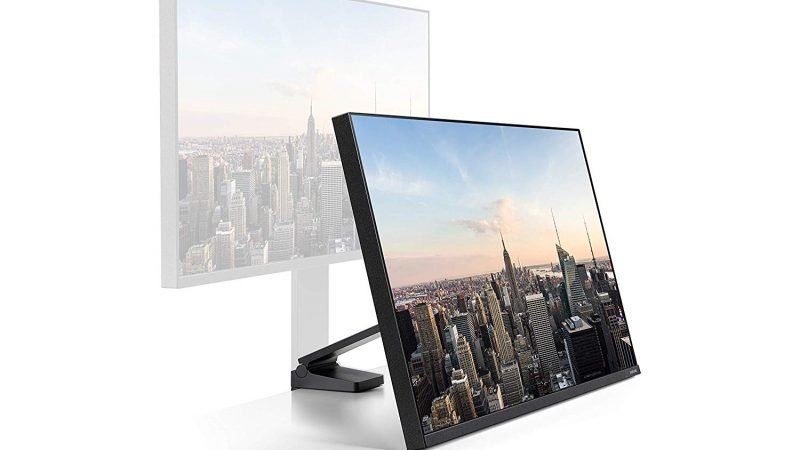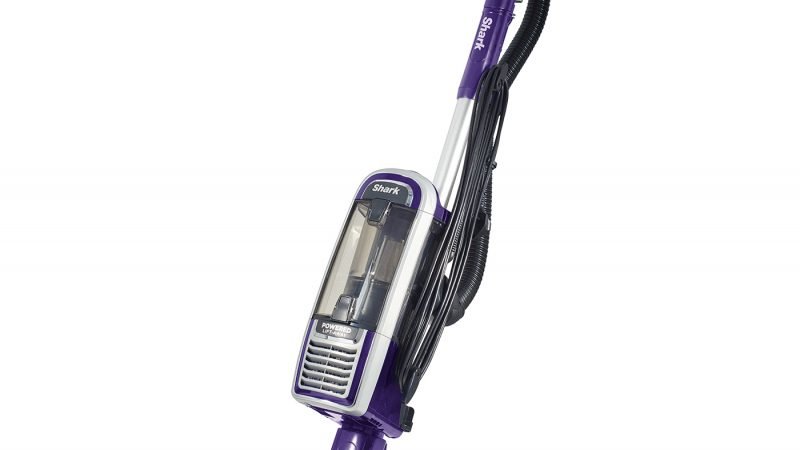Foobot review – making air quality monitoring smarter
 The new year generally sees a sudden push to hit the gyms, sales of Lycra increase and chats about being “Beach Ready” are had around the office coffee machine. However, nobody seems to equate air quality as part of a healthier lifestyle. The Foobot is a smart networked device that makes it easy to monitor what’s going in your lungs.
The new year generally sees a sudden push to hit the gyms, sales of Lycra increase and chats about being “Beach Ready” are had around the office coffee machine. However, nobody seems to equate air quality as part of a healthier lifestyle. The Foobot is a smart networked device that makes it easy to monitor what’s going in your lungs.
It is like most things. You tend to take care of the things you see, the noticeable things. For some reason it is only recently that we’ve started to take an active interest in the quality of the air we breathe.
There were a few air monitoring systems on show at CES 2018 and, with the trend going upwards and air pollution not going away anytime soon, GadgetyNews has been living with Foobot Air Quality Monitor.
Foobot review
You may think that air quality monitoring is only for those like myself who live in the city. However, even those of you who live out in the sticks will benefit from taking interest in your air quality.
The most common things to look out for are dust and pollen for those with allergies, or pollution from nearby traffic. The thing is, new furniture, cheap candles or damp conditions causing mold spores. Also, there’s levels of CO2 that will increase by simply having people in the room. So, having an early warning system can be darned handy.
Foobot design
 The Foobot device stands approximately 17cm tall. To me, it kind of looks like a swish air freshener.
The Foobot device stands approximately 17cm tall. To me, it kind of looks like a swish air freshener.
The cylindrical design is broken up by fins and gentle LEDs. Those lights change from blue to orange to red depending on the air quality.
There is just a single, captive, power cable running from the device. Apart from the logo, there is not much else to say.
Foobot should be sat centrally in order for it to cover your entire home. The thing is, although it is not ugly, it is hardly the last word in interior design.
I like it in its utilitarianism, others might not.
 They have taken great care over the packaging.
They have taken great care over the packaging.
 There are also hints of a good sense of humour on that, as well as the app.
There are also hints of a good sense of humour on that, as well as the app.
Foobot performance
Set up
[amazon_link asins=’B018LK52RQ’ template=’ProductAd’ store=’gadgnews-21′ marketplace=’UK’ link_id=”]Setting up Foobot takes just a few minutes. This is, of course, taken care of via a smartphone app.
Once you’ve downloaded the app, you have to be connected to your WiFi network with Foobot within 5 feet of your router (just for setup).
You then turn the Foobot upside down, wait for the blue LED light, place the Foobot down and enter your WiFi credentials in the Foobot App. The LED will blink five times and setup is complete.
You can then register and sign in to the Foobot app.
Once you have hooked Foobot up to your WiFi network, the app will display the indoor air quality, as well as that in your neighborhood. Furthermore, monitor displays the current status of your home using the LED that surrounds the front.
The app also gives you control over the monitor’s light intensity.
 Moreover, you can set which hours the lights come on. Yeah, I called it Sniffer. Well, what would you call yours?
Moreover, you can set which hours the lights come on. Yeah, I called it Sniffer. Well, what would you call yours?
It takes around 6 days for the Foobot Monitor to fully calibrate itself to your surroundings.
Monitoring
I am happy to report that the little Foobot sits there quite happily in my living room gently aglow with blue light. However, from time to time, the blue hue changes from strong blue to less blue to orange. This means that I should take note as there are hazardous particles in the air in the room.
Whenever you want to check on how your air quality is, just tap the app. I generally will wait until Foobot turns orange and see what category the pollutant belongs to.
 Foobot is designed to measure four main areas:
Foobot is designed to measure four main areas:
Volatile Organic Compounds (VOCs)
These are toxic chemicals of the like that you might find in cleaning sprays; but, they can be present in old furniture.
Particulate Matter (PM)
What you have here are little particles that are not filtered by your body. These include dust, aerosols and fumes. These can cause cancer, and trigger asthma amongst other things. Footbot can detect PM with a size of between 0.003 to 2.5 micrograms.
Humidity
As you are probably already aware, this is the amount of moisture in the air: a room that’s too humid can develop mold and bacteria; too dry, and it can lead to sinus problems, dry skin and itchy eyes.
Temperature
Foobot keeps an eye on how hot your home is, but can be useful for other correlations. For example, VOC readings tend to increase in higher temperatures.
CO2
Finally, CO2 is measured, with high levels indicating that the air needs to be refreshed.
You can set Foobot to notify you depending on what you are more concerned about.
 Here I have it set to let me know when there’s a Pollution Event, Volatile Compounds detected, and a spike in Humidity.
Here I have it set to let me know when there’s a Pollution Event, Volatile Compounds detected, and a spike in Humidity.
Your little Foobot will also send you emails, just so you can keep a tab on things.
 This is a great way of getting an overview of your room’s air quality.
This is a great way of getting an overview of your room’s air quality.
Digging deeper
The LED indicator is a great way to see the status at a glance but you can’t tell what the cause is. Instead of a handy little display you have turn to your smart device.
 Thankfully, the app is easy to use and set out in an intuitive manner.
Thankfully, the app is easy to use and set out in an intuitive manner.
 The clear homescreen gives you a score (lower is better) and a descriptive word for the level of air quality: Great, Good, Fair or Poor.
The clear homescreen gives you a score (lower is better) and a descriptive word for the level of air quality: Great, Good, Fair or Poor.
 As well as the exact readings for each of the main measurements you can access more details. For instance, tapping the PM reading a measure of between 0 and 12 is Great, and above 37 is Poor.
As well as the exact readings for each of the main measurements you can access more details. For instance, tapping the PM reading a measure of between 0 and 12 is Great, and above 37 is Poor.
 Furthermore, for each reading, the app gives you tips on what to do. It does seem to favour opening a window to refresh air but it will also suggest you being careful of cleaning products that contain VOCs.
Furthermore, for each reading, the app gives you tips on what to do. It does seem to favour opening a window to refresh air but it will also suggest you being careful of cleaning products that contain VOCs.
These tips could be a little bit more detailed, to be honest. Also, the app could make it easier to scroll through multiple bits of information.
A double tap on the top of the Foobot triggers the app to send a notification to your phone, showing the current readings, too.
Spikes
It’s not always easy to track what has caused a spike, but Foobot aims to help by prompting you to tag those spikes.
 So, if there was a spike while you were cleaning, tag that. This way you can see if this is always the case and perhaps reconsider your cleaning products.
So, if there was a spike while you were cleaning, tag that. This way you can see if this is always the case and perhaps reconsider your cleaning products.
 Perhaps, the spikes only occur when you’re cooking. This might point to using an extractor hood or opening a window when you do-so next time.
Perhaps, the spikes only occur when you’re cooking. This might point to using an extractor hood or opening a window when you do-so next time.
Automation
Alexa
The Alexa Skill enables you to ask Foobot what the air quality is like.
 This saves you having to open the app.
This saves you having to open the app.
IFTTT
You have a few options for connecting the Foobot to your home. You can use IFTTT (If This Then That) to perform a variety of air quality related actions.
 The applets are ready made and set up. However, If you’re feeling creative, why not build your own IFTTT applet?
The applets are ready made and set up. However, If you’re feeling creative, why not build your own IFTTT applet?
Other smart home integration
You can also hook Foobot up to communicate with Nest and Honeywell products direct from the app.
 Unfortunately, I do not have any of this kit and so couldn’t play with it.
Unfortunately, I do not have any of this kit and so couldn’t play with it.
Foobot review conclusion
To be honest, I didn’t really give the air quality in my home a second thought. True, if it gets stuffy I’d open a window but that would be about it.
However, knowing what’s going on in your home is surprisingly useful, and it can certainly help you make changes to improve things. This is even more pertinent to those who suffer from allergies or who have small children. Being able to accurately monitor and mark off events that cause spikes could well make life easier.
The App is easy to use, setup is a breeze. The calibration time may frustrate some but we are dealing with what is, assumingly, some delicate monitoring kit.
This has opened my eyes to other air monitors available. Foobot does seem to be a very good option thanks to its range of measurements, IFTTT and Alexa integration.
Foobot is a great way to monitor indoor air quality and should become a part of everyone’s smart home system.
Foobot price and availability
You can start monitoring your home’s air quality and make improvements right now. You can buy Foobot from Amazon for £179 – down from £254.95.






